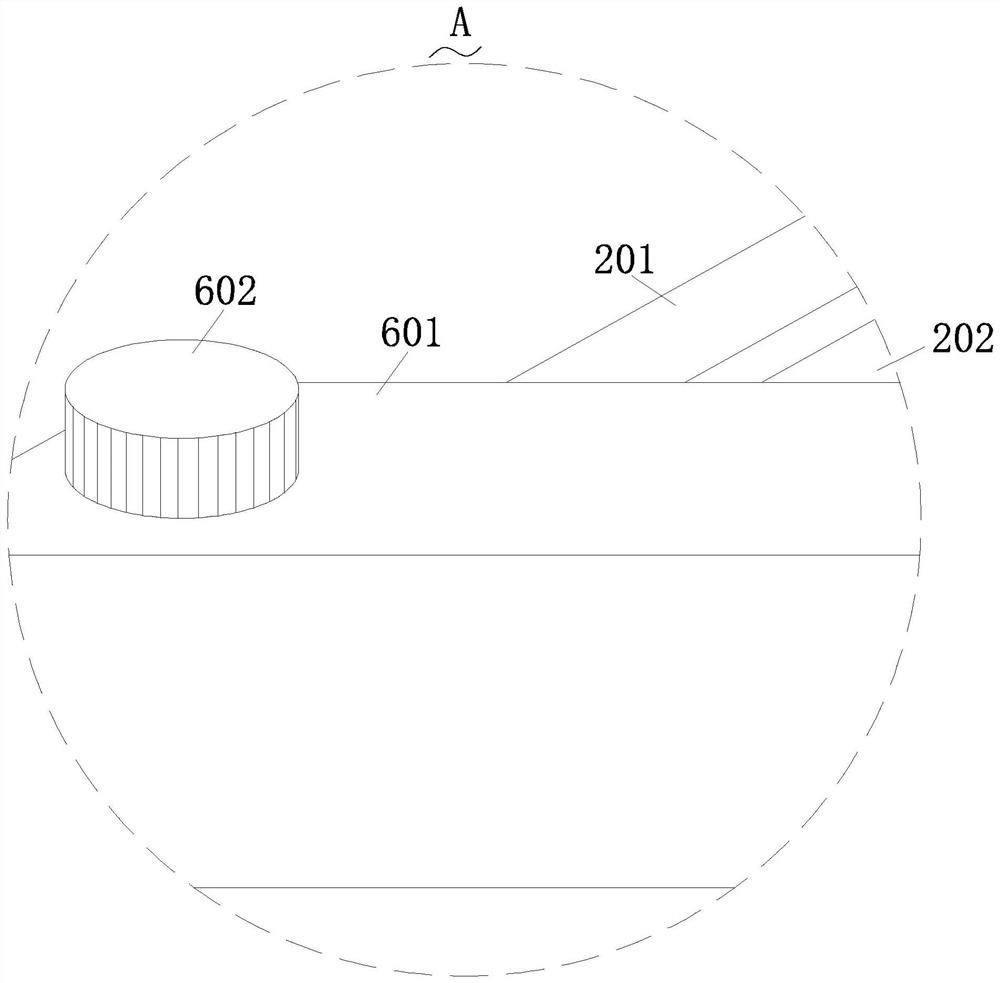Straightening method suitable for composite steel sheet
A composite steel plate and thin plate technology, applied in the field of machinery, can solve problems such as deflection and large edge waves, strong elastic deformation force, affecting the straightening effect of composite steel plate and thin plate, and achieve the effect of improving the processing effect
- Summary
- Abstract
- Description
- Claims
- Application Information
AI Technical Summary
Problems solved by technology
Method used
Image
Examples
Embodiment Construction
[0027] In order to make it easy to understand the technical means, creation features, achieved goals and effects of the present invention, the present invention will be further described below with reference to the specific embodiments.
[0028] like Figure 1-Figure 10 As shown, a method for straightening a composite steel sheet according to the present invention includes a base plate 1, on which a conveying mechanism 2 is fixed; a fixing mechanism 3 is fitted on the conveying mechanism 2; A guide mechanism 4 is slid on the mechanism 3; a straightening mechanism 5 is installed on the transmission mechanism 2; a lubrication mechanism 6 is fixed on the transmission mechanism 2;
[0029] The fixing mechanism 3 includes a fixing frame 301, the guiding mechanism 4 includes a motor 401, the motor 401 is fixedly installed on the fixing frame 301, and the output end of the motor 401 is fixedly connected with a screw 405 through a coupling. The rotation directions of the threads at b...
PUM
 Login to View More
Login to View More Abstract
Description
Claims
Application Information
 Login to View More
Login to View More - Generate Ideas
- Intellectual Property
- Life Sciences
- Materials
- Tech Scout
- Unparalleled Data Quality
- Higher Quality Content
- 60% Fewer Hallucinations
Browse by: Latest US Patents, China's latest patents, Technical Efficacy Thesaurus, Application Domain, Technology Topic, Popular Technical Reports.
© 2025 PatSnap. All rights reserved.Legal|Privacy policy|Modern Slavery Act Transparency Statement|Sitemap|About US| Contact US: help@patsnap.com



